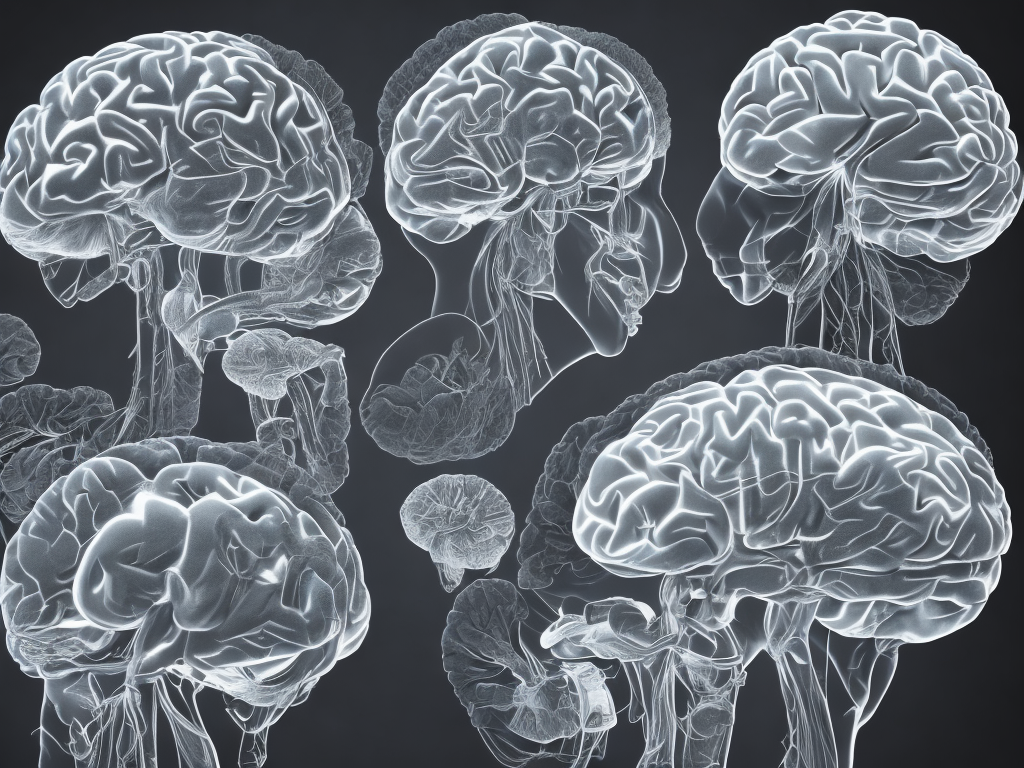
The brain is an incredibly complex organ responsible for controlling all of our body’s functions. It is divided into different regions, each with its own specific roles and responsibilities. Two of the most prominent regions of the brain are the cerebrum and the cerebellum. While both are critical for normal brain function, they differ in terms of structure, location, and function. In this article, we will explore the differences between the cerebrum and the cerebellum and delve into their unique contributions to our overall brain health.
Let's start by looking at the structure and location of both the cerebrum and the cerebellum. The cerebrum is the largest part of the brain and makes up about 85% of its total mass. It is located in the uppermost part of the skull and consists of two cerebral hemispheres, which are connected by a dense bundle of nerve fibers called the corpus callosum. The cerebrum is responsible for higher-order brain functions, such as conscious thought, reasoning, language, sensory perception, and voluntary muscle movement.
On the other hand, the cerebellum is a smaller structure located at the back and bottom of the brain, just above the brainstem. It is often referred to as the "little brain" due to its appearance and resemblance to the cerebrum, albeit much smaller. The cerebellum is primarily known for its role in coordinating and fine-tuning movement, balance, and posture. Despite its smaller size, the cerebellum contains about half of the neurons (nerve cells) in the brain, emphasizing its importance in motor control.
Now, let's discuss the functions and responsibilities of the cerebrum and the cerebellum in more detail. The cerebrum is responsible for most of our higher-level cognitive functions. It allows us to interpret sensory information from our surroundings, analyze it, and respond accordingly. It is involved in our ability to think, reason, and make decisions. Additionally, the cerebrum houses the primary sensory and motor areas, which control our sense of touch, vision, hearing, taste, and smell. Through these areas, the cerebrum facilitates communication between different parts of the body, allowing us to consciously move our limbs, speak, and perform intricate tasks.
The cerebellum, on the other hand, plays a crucial role in motor control and coordination. When we move, the cerebellum receives signals from our muscles, joints, and tendons, allowing it to adjust and fine-tune our movements to ensure smooth and precise execution. It acts as a "quality control center," monitoring movement patterns and making corrections to optimize their accuracy and efficiency. Furthermore, the cerebellum aids in maintaining balance and posture by receiving information from the inner ear, helping us stay upright and stable.
Another significant distinction between the cerebrum and the cerebellum is their involvement in different types of memory. While both regions contribute to memory processes, they do so in distinct ways. The cerebrum, specifically the hippocampus within it, is vital for declarative memory, which refers to our ability to consciously recall facts, events, names, and places. On the other hand, the cerebellum contributes to procedural memory, which deals with the learning and recall of motor skills and habits. For example, riding a bicycle or playing a musical instrument relies heavily on procedural memory, which is heavily influenced by the cerebellum.
In terms of diseases and disorders, both the cerebrum and the cerebellum can be affected by various conditions, often resulting in significant impairments. Damage or injury to the cerebrum can lead to cognitive deficits, such as memory loss, difficulty with language and communication, altered judgment, and changes in personality. Conditions such as stroke, traumatic brain injury, and neurodegenerative disorders like Alzheimer's disease primarily affect the cerebrum.
Conversely, damage to the cerebellum can cause issues with coordination, fine motor skills, balance, and posture. Symptoms of cerebellar damage include loss of coordination, tremors, difficulties with speech, and problems with gait. Conditions that can affect the cerebellum include stroke, multiple sclerosis, tumors, and genetic disorders like Friedreich's ataxia. Treatment for cerebellar disorders often involves physical therapy and rehabilitation to help relearn and develop compensatory strategies for impaired motor skills.
In conclusion, despite both being critical components of the brain, the cerebrum and the cerebellum have distinct roles and responsibilities. The cerebrum, being the largest part of the brain, is responsible for conscious thought, sensory perception, reasoning, language, and voluntary muscle movement. On the other hand, the cerebellum, though smaller in size, is crucial for coordinating movement, balance, and posture. Understanding the differences between these two remarkable regions of the brain helps us appreciate the complexity and intricacy of this incredible organ and helps scientists and medical professionals develop strategies for diagnosing and treating brain diseases and injuries.
 Self-Instruct
Self-Instruct